
 Bookmark this on Delicious
Bookmark this on Delicious
 Recommend to StumbleUpon
Recommend to StumbleUpon

As you know from the main page of this site: Yes! We saw tigers! In fact we had one especially fabulous encounter with one.... Munna, in Kanha park. I find it hard to believe that tourists have had a better encounter more than a handful of times in the past five years.
And yes, we also saw tigers on several other occasions. The Munna experience wasn't my first... In some ways, I am please about this. I will, of course, always treasure that first sighting, so I have Two "special" tiger memories... my first, and the Munna encounter.
There were also drives on which we did not see... tigers. If you are contemplating a trip, you have to understand the reality of what you are attempting, and what you can realistically expect. But while some drives may have been tiger-less, none were point-less.
I set off to India telling friends "I'm sure it will be worth it, even if we don't see a single tiger."
I'm delighted that I have not been required to put that idea to the test, but I still think I would feel that way. We saw so many, wonderful, things along the way of trying to see tigers. Not least our encounter with the sloth bear and her cub, to be reported elsewhere. Not least our glipse of the rare dhole. Many have seen tigers. Not as many, I suspect, have seen dhole. (Few people I've spoken to know what one is, even by the easier name, "Indian wild dog". (And no, it isn't much like the African wild dog. Nor is it merely a feral dog, i.e. an Indian dog gone wild.))
In due course, I will give you more photos, more details.
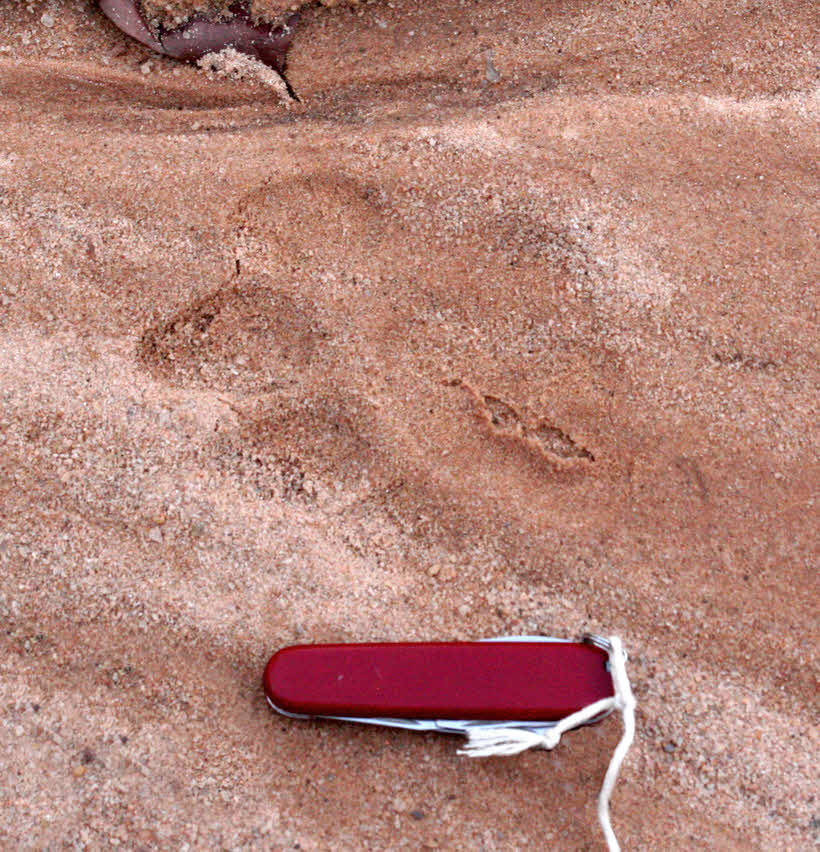
Oh yes! "Here be Tigers"... now... can we SEE one...?
The knife is the xth generation of my faithful Swiss army knife, which often appears in photos to give scale. Knife is 9cm long. The string is to lower it to the ground... no one, guide nor guest, is allowed out of the vehicle in the parks.
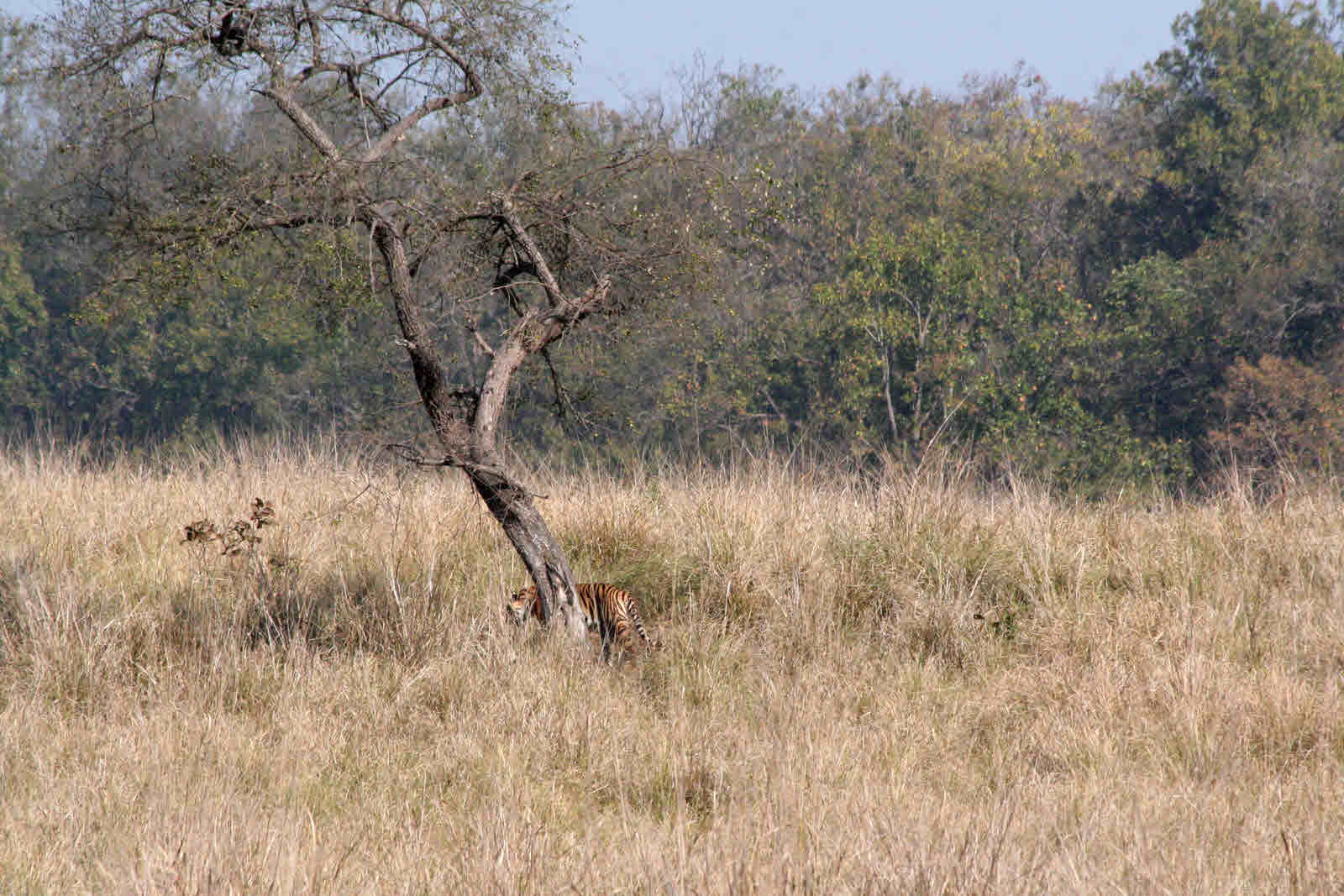

On the left: My first photo of my first tiger! All of the frame, taken with a 300mm lens. A well grown cub. A tremendously exciting moment. We "knew" they were there. They were just whiling away the day... even at this age, they just lie around waiting for Mom to announce supper. The hope... realized... was that they would decide that the sun had got to hot where they were, and bestir themselves, move to a shadier spot. Not far. Just out of the direct sun. It was mid-morning . I keep saying "they"... there were several cubs... four, as I recall, and all in roughly the same place. We only saw the one. But it was enough! This taken in the morning of March 3rd.
The first tiger was only up briefly. As hoped, moving to a better spot for resting. He settled down again, out of sight, before too long, alas. But it was one of those moments when the interval as measured by a clock, and the interval perceived were very different.
On the right: Taken in the afternoon of the 3rd. The tiger is standing still, with mouth open... They do this to "taste" (and smell) the air, to see what they can sense. Pity it is so fuzzy. Oh well. Not fuzzy in my recollections!
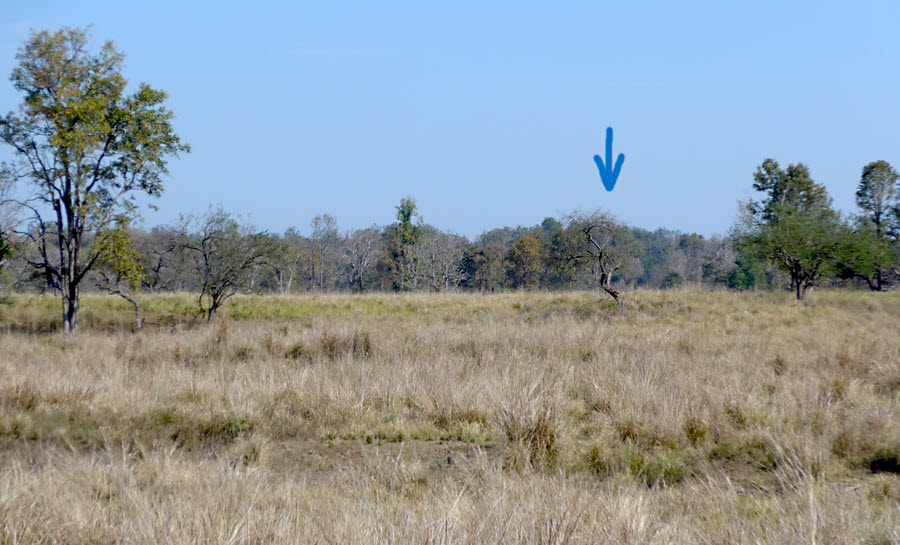
The picture above shows where my first tiger was when I saw him, photographed from where I saw him. He was on a slight ridge in the dry grasses. I've marked the spot with the blue arrow.
The place was "poetic"... I'm pretty sure we were in "the Kanha meadow". I know we were between the tiger and "Schaller's Hide", i.e. the small building from which the biologist watched the wildlife of Kanha while doing his research for his important book "The Deer and the Tiger", which I had read with great interest before going on the trip.
So... Our first day. Two drives: Morning and afternoon... and a tiger seen both times. Fabulous start... but better, and worse, was to come!
(The photo at the top of the page is of Munna, seen at end of second day's drive.)
(EDITING OF THIS PAGE TO BE CONTINUED.. sorry... for now, some more Kanha photos, in a jumble, followed by some Bandhavgarh photos...)
I may not have this quite right... want to check notes... but I'm pretty sure there was a neat symmetry to our tiger hunting...
Two parks. Two days of tiger searching in each. And two search sessions per day. Simples!
We "hit orange" on the first drive. That was when the "mob scene" occured, but not for a while. Saw a tiger in the same place in the afternoon... without the human mob.
Munna: At end of second day, first park, Kanha.
Less lucky... in tigers... at Bandhavgarh. Details in due course. One lady staying at one of our lodges had "put in her time"... ten drives, no tigers. Happily, while we were there, she was finally rewarded. Just, in case I haven't said it before, know that you can't expect to be lucky.
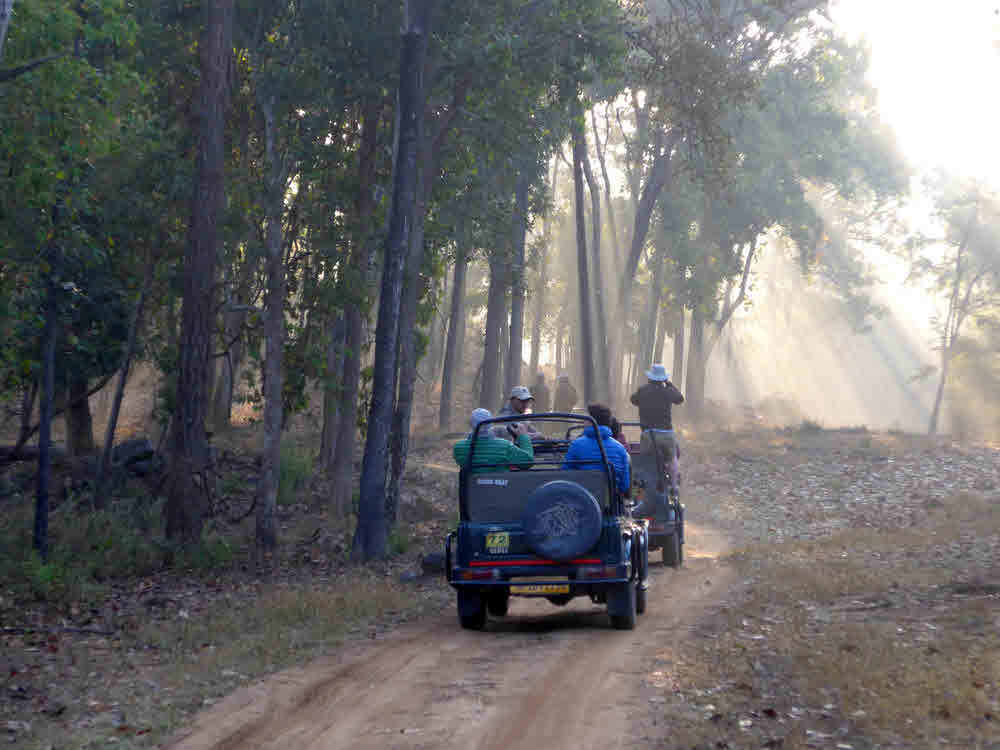
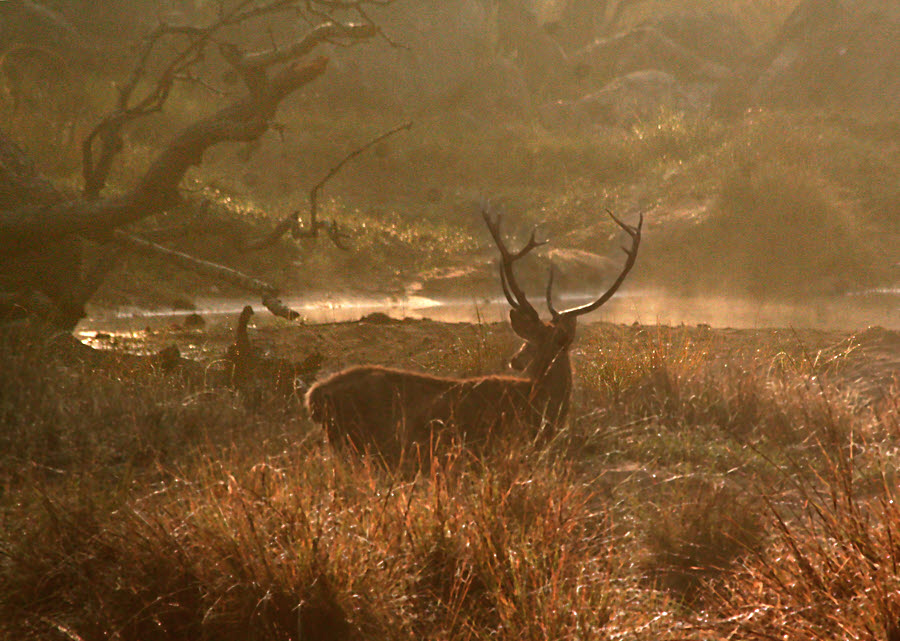
"A Tiger Searching We Will Go"... first picture taken, first day of the tiger drives. Kanha. Sal forest.
On right: A beautiful animal... and the tiger tourist's friend: An excellent tiger spotter, and calls out when it sees one... and good tiger food, too...
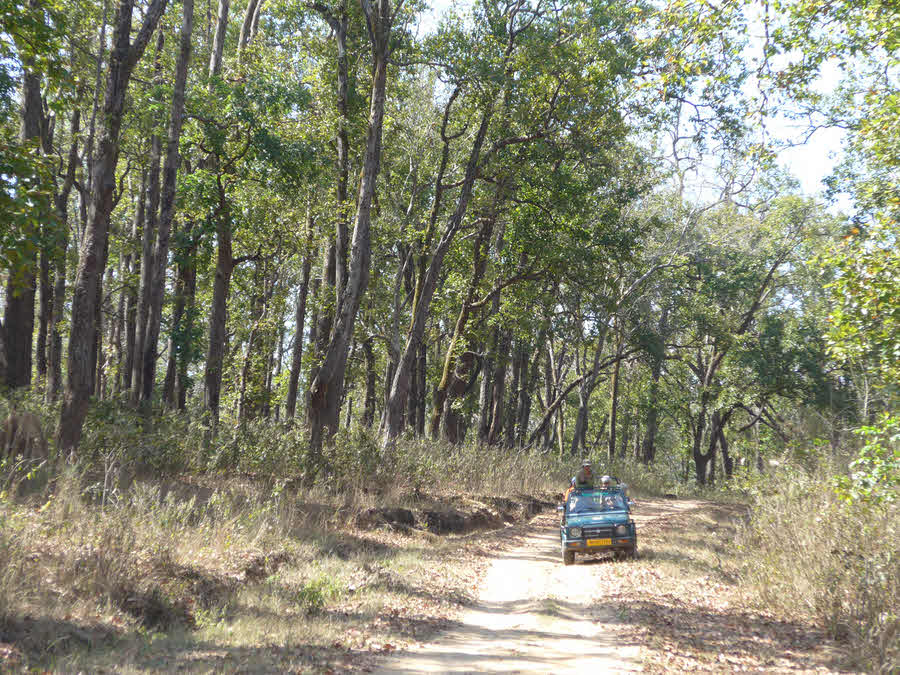
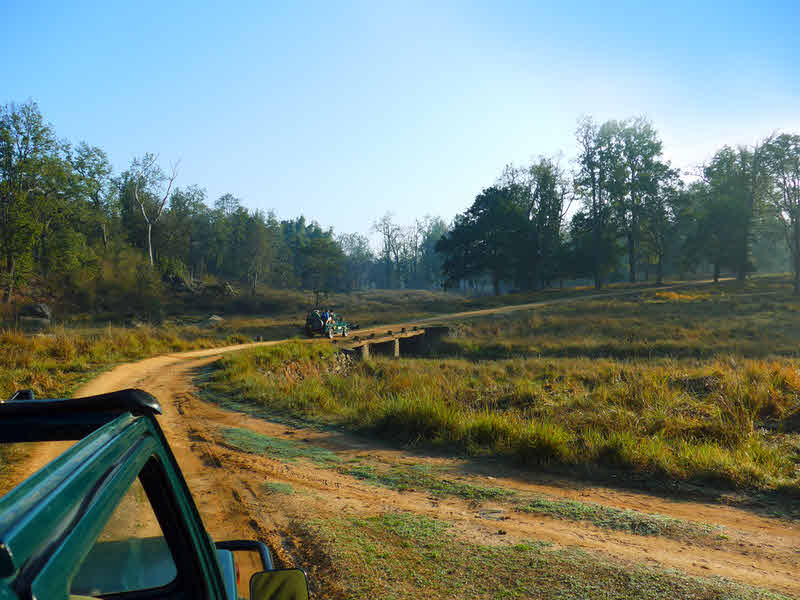
Left: Searching, searching. Tiger, tiger, anyone seen a tiger? In the sal forest of Kanha.
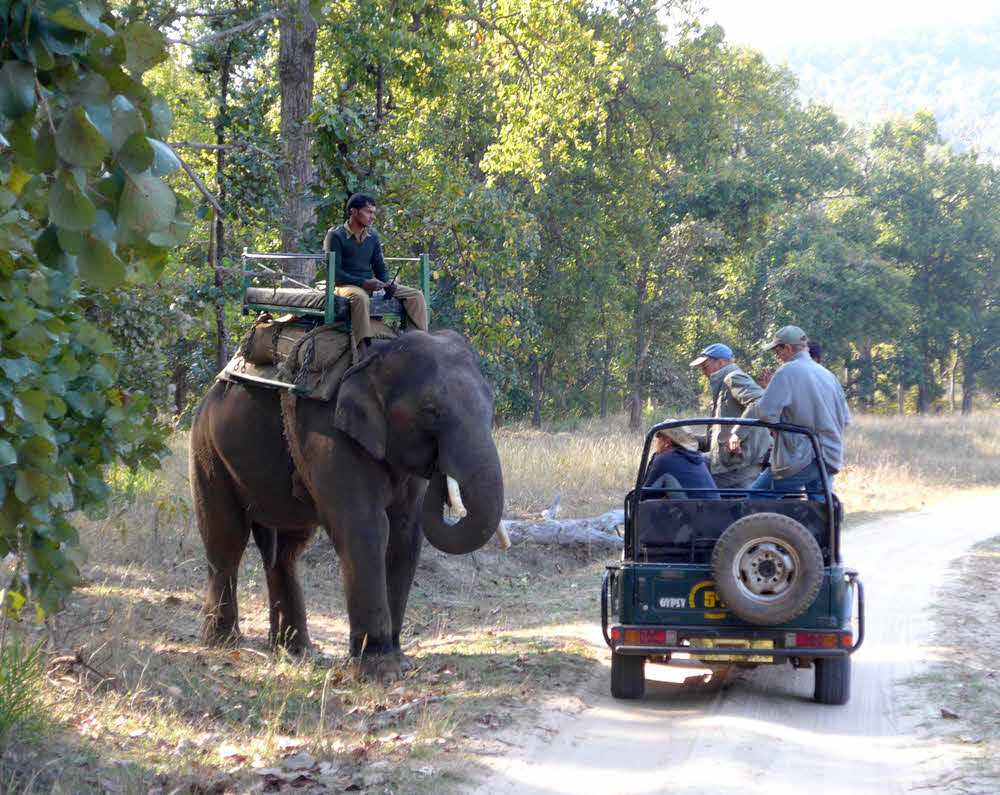
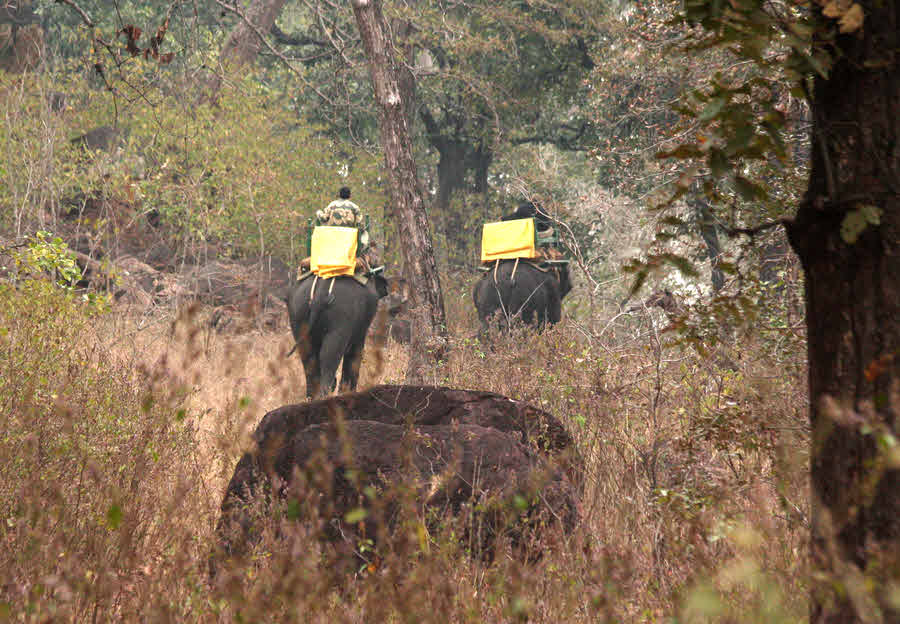
I'll have to tell you about these elephants someday... Those on the left were in Bandhavgarh, those on the right in Kanha.
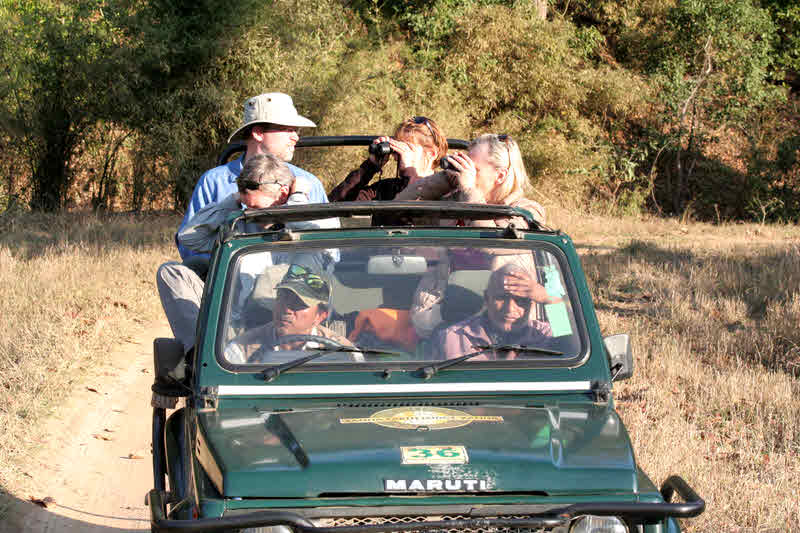
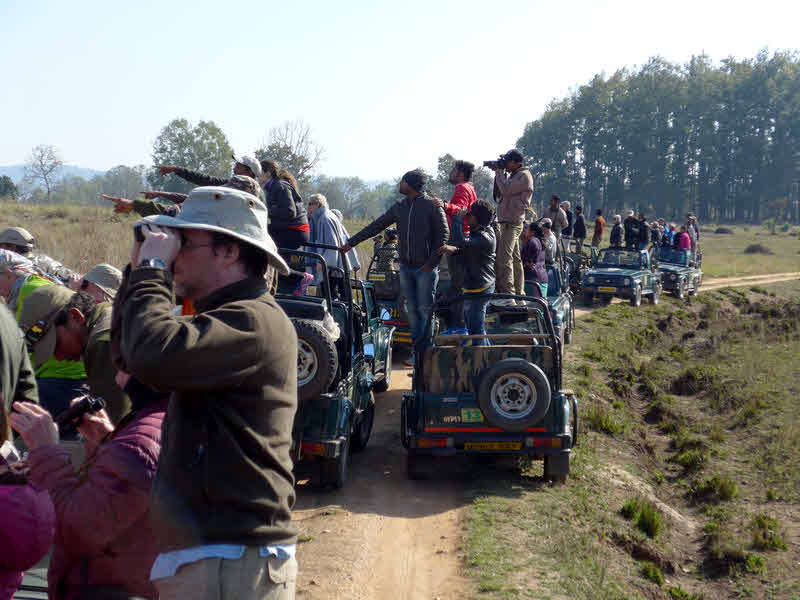
Left: I think the gentleman in the front seat is trying to avoid the sun, not succumbing to despair.
Right: Only caught in a mob like this once... thank heavens! The parks do a good job of restricting access, so that the wildlife aren't stressed, and the visitors' experience not degraded.
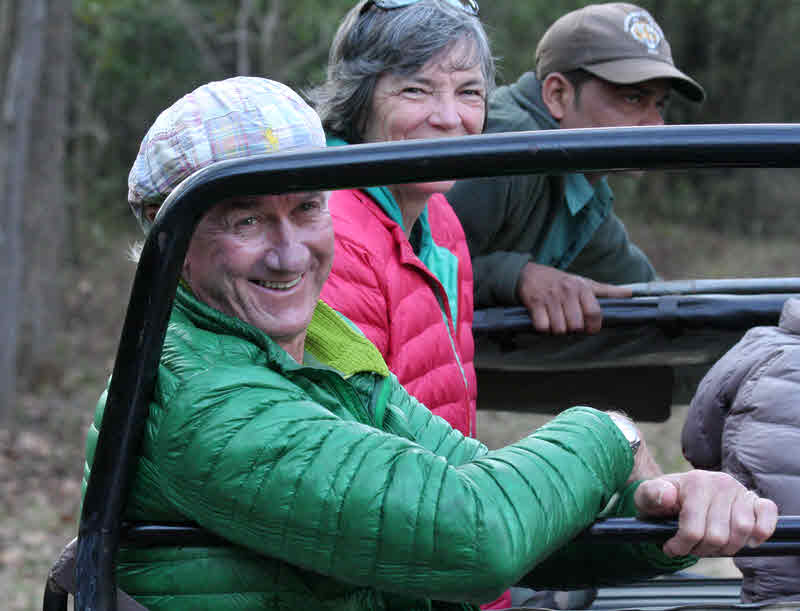
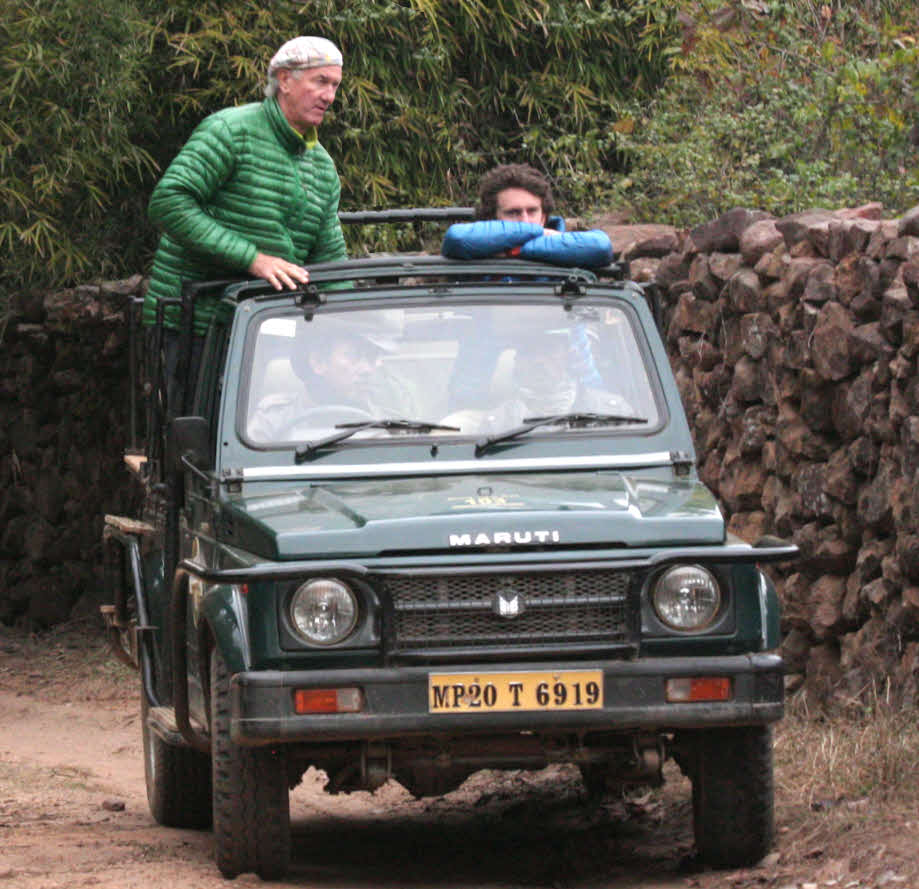
One was just after our Great Encounter, with Munna, at Kanha. The other, after bouncing over tough roads for hours, without seeing tigers. You figure out which is which...
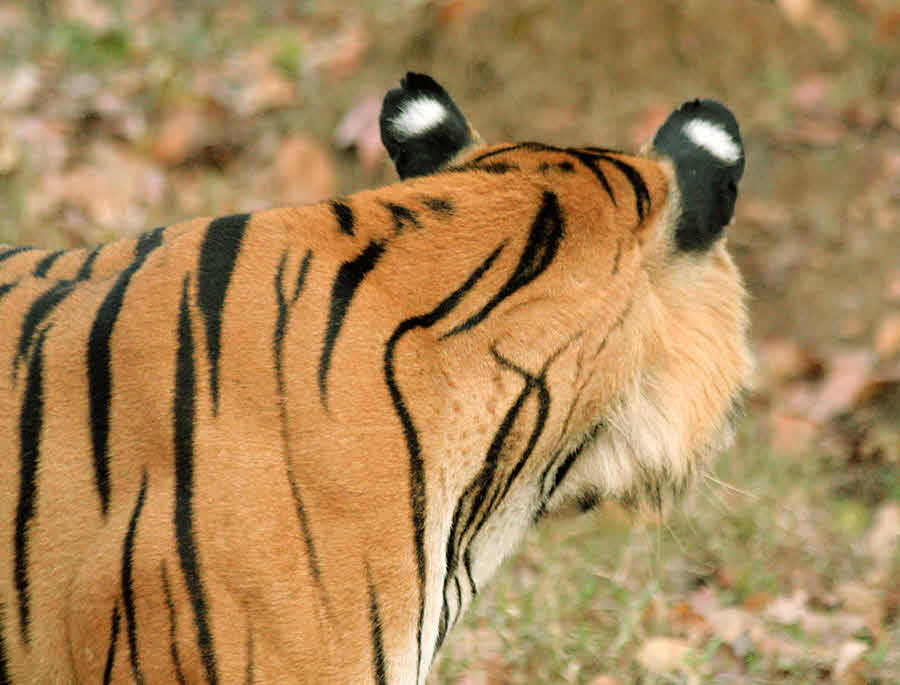
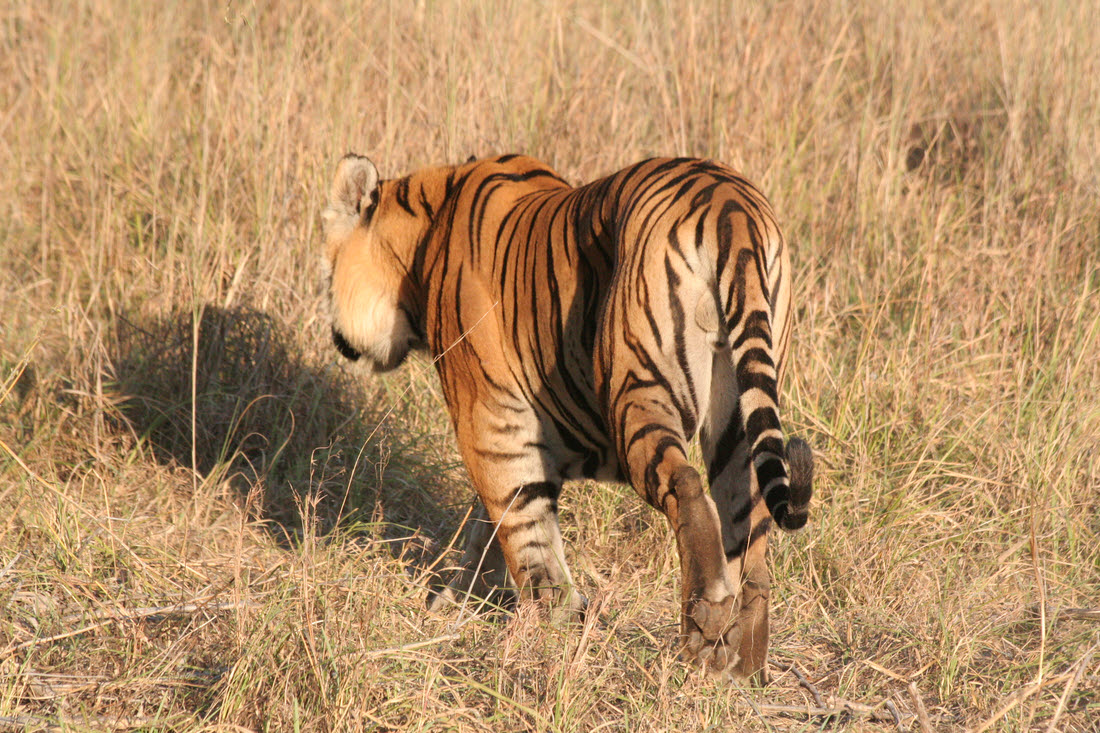
I've always loved these markings... on tigers and racoons. (Munna)
(Right side:) Munna again. He really did give us quite a show, and opportunies. This photo taken with my lens zoomed to 220mm, uncropped, un-processed. Just As It Was.
This was at the end of "act one"... Munna came back after moving away from the track for a brief period. Were we excited? Guess.
Believe it or not, I hadn't noticed I had this photo until many, many days into the photo-editing/ page building process. And found it at the end of a long day. A rather nice end to the day...
The observant among you will recognize it as the source of my more dramatic "grass face" photo, which headlines the whole India trip report. Is either of the the following worthy of space too, or should I stick to just the best cropping, face only? (That close, face only, crop was something I "thought of" more or less by accident, at the last minute. Is it TOO close?)


-

Panorama of Bandhavgarh lowlands, done for me without fuss by my excellent Lumix DMC-LF1. One of the stations of the Great Triangulation of India was on top of the massif at the right of this image. Sadly, we didn't get all the way to the top of that, though we did visit a large reclining Buddah well up the flank.
(EDITING OF THIS PAGE TO BE CONTINUED.. sorry... for now, some Bandhavgarh photos, in a jumble. (Kanha photos: Above here.)
I'm disappointed I didn't do a better job of capturing the dramatic landscapes and geology of Bandhavgarh. There were major differences on those parameters between Banhavgarh and Khana, though both are sal forest for the most part. Kanha didn't have the very serious rock "castles". A local ruler had his "stonghold" on top of the best of them, hundreds of years ago.
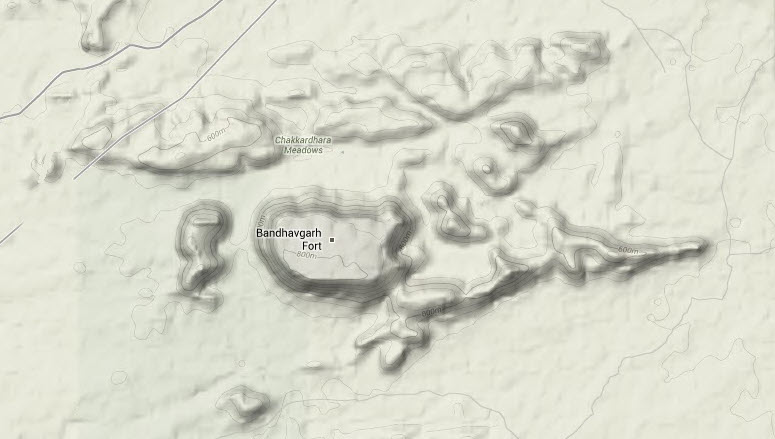
We never got quite to the top of the main mesa... but we went well up its flanks from time to time. We spent most of our time in the flat lands below it, or on the smaller hills. (One of the survey points for the great trigonometric survey of the 1800s was at the fort.) The top of the mesa is at about 800m, the valley floor at about 520m... a difference of about 900 feet. Long dimension: 1.2 miles. It was a stunning "presence" during our time at Bandhavgarh, even when we were in woods and couldn't see it for the moment.
Of the fort, Wikipedia says...
No records are available to show when Bandhavgarh Fort was constructed. However, it is thought to be some 2000 years old, and there are references to it in... ancient books... It is also believed that Lord Rama visited Bandhavgarh and gave this fort to his younger brother Laxmana (Bandhu) resulting in the name- Bandhavgarh. Various dynasties have ruled the fort; including the Mauryans from the 3rd century BC, Vakataka rulers from the 3rd to the 5th century the Sengars from the 5th century and the Kalachuris from the 10th century. In the 13th century, the Baghels took over, ruling from Bandhavgarh until 1617, when Maharaja Vikramaditya Singh moved his capital to Rewa. The last inhabitants deserted the fort in 1935. (end Wikipedia quote). (We didn't get up to the top of the hill to see the fort itself... but the hill was impressive. We saw various ancient Works Of Man in the area.)
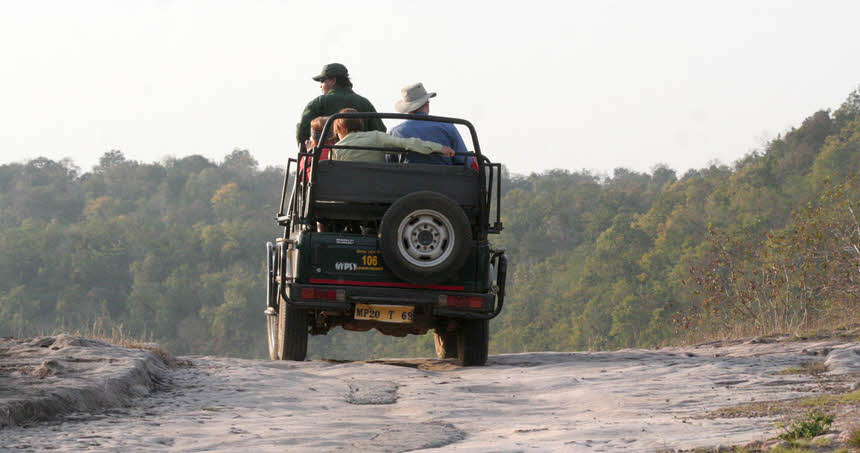
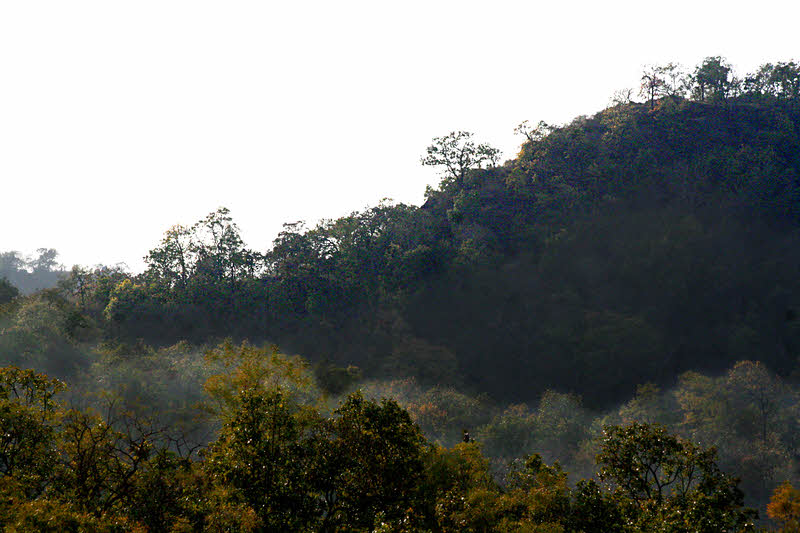
-
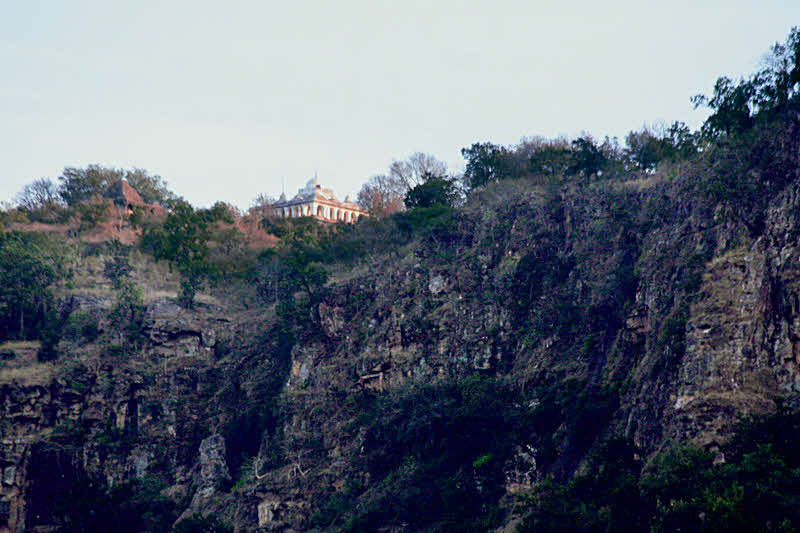
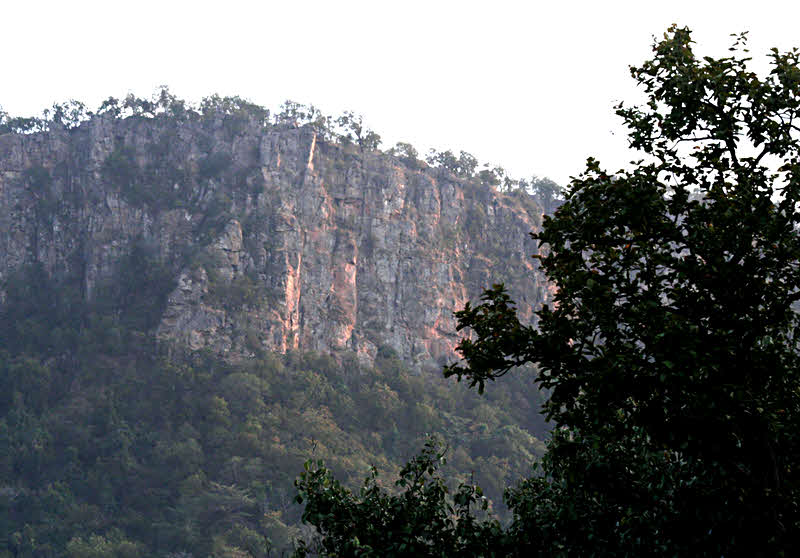
These are serious cliffs. See the trees on top, in the right hand photo above? Those are substantial trees, not stunted shrubs. The ring the top of "mesa-like" hills... they are't a long escarpment.

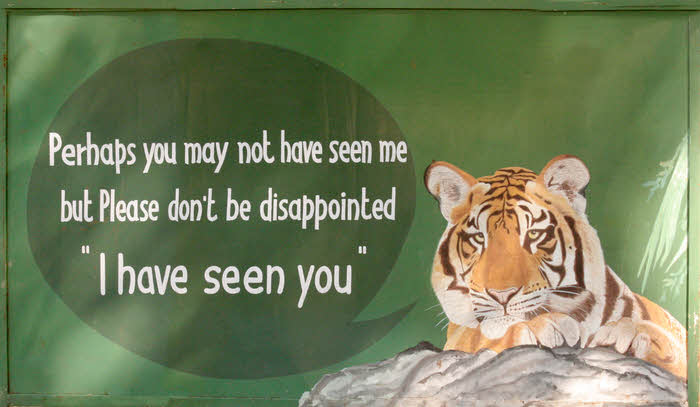
You don't see tigers every time you try. I think whoever put this sign at the exit from Bandhavgarh is a kind and thoughtful person. It's a long day, and to have some sympathy when unlucky... in tigers... was welcome. But keep the right attitude, and you will enjoy every drive in Bandhavgarh, tigers or no. (Better with tigers, though.)

Here is information from the internet on the two places we went to see tigers...
Wikipedia extract...
Kanha National Park is a national park and a Tiger Reserve in the Mandla and Balaghat districts of Madhya Pradesh, India. In the 1930s, Kanha area was divided into two sanctuaries, Hallon and Banjar, of 250 and 300 km2. Kanha National Park was created on 1 June 1955. Today it stretches over an area of 940 km2 in the two districts Mandla and Balaghat. Together with a surrounding buffer zone of 1,067 km2 and the neighboring 110 km2 Phen Sanctuary it forms the Kanha Tiger Reserve."Kanha Tiger Reserve". Madhya Pradesh Forest Department. Retrieved 14 April 2010. This makes it the largest National Park in Central India.
The park has a significant population of Royal Bengal Tiger, leopards, the sloth bear, Barasingha and Indian wild dog. The lush sal and bamboo forests, grassy meadows and ravines of Kanha provided inspiration to Rudyard Kipling for his famous novel "Jungle Book". (End Wikipedia extract.)
I "knew" the Kanha reserve before seeing it for the first time from the excellent book "The Deer and the Tiger", Schaller. (You may have to be a biologist to love that book... but I am. (It is a "popular" account of a year's research at Kanha.)) If you are planning a visit, I recommend you read the book.
Before the trip, I thought Bandhavgarh Tiger Reserve (-WP-) was the reserve that I have seen repeatedly in television programmes about Indian tigers, but it turned out I was mistaken... not that it much mattered.
(From the Wikipedia article:) "This park has a large biodiversity. The density of the tiger population at Bandhavgarh is one of the highest known in India. The park has a large breeding population of leopards, and various species of deer."
Want to look closely at some image? To zoom in on just bits of it? I explain how, and give some other browsing tips on the linked page.
If you came to this page by clicking on one of the links on the trip's main page, you can just close this tab to return there.
If you find yourself wanting to use a photo on this site, please see my page about using web-published material which is copyright TK Boyd. If you want to contact me, here's my eddress, or you can use the contact form. (Email best, as the contact form is often abused, and I don't read all messages arriving that way.) Corrections to bad information on the pages very welcome... don't be shy!
![]() Page has been tested for compliance with INDUSTRY (not MS-only) standards, using the free, publicly accessible validator at validator.w3.org. Mostly passes. There were two "unknown attributes" in Google Translate and Google+ button code. Sigh.
Page has been tested for compliance with INDUSTRY (not MS-only) standards, using the free, publicly accessible validator at validator.w3.org. Mostly passes. There were two "unknown attributes" in Google Translate and Google+ button code. Sigh.